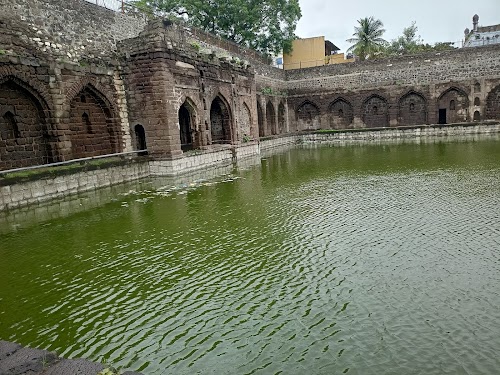
Chand Baudi
Vijayapura, India
- Explore the stepwell
- Learn about water-harvesting
- Take photos of architecture
- Visit Harshat Mata Temple
Known for:
Description:
Chand Bawdi, also known as Chand Baori, is an ancient stepwell located in Abhaneri, a village near Jaipur in the Indian state of Rajasthan. It is one of the deepest and largest stepwells in India, with a square plan and 13 stories deep. The stepwell features 3,500 narrow steps arranged symmetrically on three sides, descending to a deep well. The fourth side has pavilions and resting rooms for royals. The architecture is intricate and visually stunning, showcasing the ingenuity of ancient water harvesting techniques. Visitors can marvel at the geometric patterns created by the steps and the play of light and shadow. The site is popular for photography and offers a glimpse into India's rich architectural heritage.
History:
Chand Bawdi was built in the 9th century AD by King Chanda of the Nikumbha dynasty. It was constructed primarily to address the water scarcity in the semi-arid region. The stepwell served as a reliable source of water for the local community, as well as a place for social gatherings and religious ceremonies. The name "Chand Bawdi" is derived from King Chanda. The stepwell's intricate design and engineering allowed for the collection and storage of rainwater, ensuring a consistent water supply throughout the year. Over the centuries, Chand Bawdi has withstood the test of time and remains a remarkable example of ancient Indian architecture and water management systems.